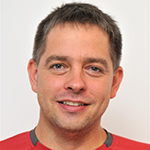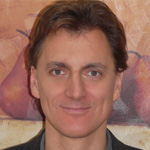Lukas Simokaitis 


|
System architect in international company "ERP". Working mainly with J2EE platform. Making architecture decisions using nTier architecture, open source technologies and SOA decisions. Most projects are done in multicultural, distributed environment. Fond of Agile methodologies since my studies of bachelor. From theory to practices in such companies as Tieto and now in ERP. Tough Lessons in distributed-multinational environmenteCustoms SOA based project for Tajikistan which took 2 years. Project has been finished successfully (not on time but with larger scope). Client was very pleased with a results and is willing to continue cooperation in other projects. This was our first attempt to use full Scrum methodology in such project. Project was done by 8 distributed teams: 2 teams in Lithuania, 2 teams in Belarus, 2 teams in Kazakhstan, 1 Team in Azerbaijan and 1 team in Tajikistan. Team faced and had to make tough choices: from political flavor to unwillingness cooperate among other teams or use Agile practices. Team which worked according to Scrum stayed focused and in healthy condition despite all obstacles it faced. Lukas Simokaitis: Tough Lessons in Distributed-Multinational Environment
View more presentations from Agile Lietuva |
Tomas Sakalauskas 
|
Tomas Sakalauskas is managing director of UAB Prewise. With over 15 years spent in software development, management and process development, he works on collaboration software for agile teams called Eylean. Moving to kanbanKanban is an evolution of organization. No hard decisions, big investments, transition periods, no cultural shock to team members. It simply provides a way to see what is happening in a project. You might not like what you see initially, but one step at a time it allows rearranging the processes and mindsets towards delivery oriented, highly efficient, wasteless production that ensures continuous value stream. Tomas Sakalauskas: Moving to kanban
View more presentations from Agile Lietuva |
Paul Goddard 
http://www.agilify.co.uk/scrum-master-diary |
Paul Goddard is an agile coach with experience of working with several scrum teams and projects, and is a keen practitioner and trainer of scrum and agile delivery. Starting as one of the first practicing Scrum Masters within BT (formerly British Telecom), he now acts as an independent coach for teams new to scrum and agile techniques. His coaching skills have been used on some of the largest agile transformation projects in the world to date, including multiple geographically dispersed teams using an offshore model. Paul's experience with enterprise scrum was widened while acting as a ScrumMaster for Nokia where he was involved with both applying, teaching and coaching scrum. As an independent coach and trainer, Paul has aided several other companies on their agile journeys in a variety of industries ranging from small independent holiday travel companies through to multi-national technology and consultancy providers. Scrum Master - role or job?There are 3 'roles' defined in Scrum - one of those being the 'ScrumMaster'. But is 'role' the best word to use? Can a 'role' be shared amongst people in the Scrum team? Is it a full-time 'role'? This talk will dispell some of the commonly occurring myths surrounding this crucial role, and give some handy tips on how good ScrumMasters can become great Scrum Masters. Paul Goddard: Scrum Master - Role or Job?
View more presentations from Agile Lietuva |
Tomas Butkus |
Tomas Butkus has over 10 years of experience in design and development of n-tier and service-oriented software systems. He has collected extensive experience in companies already using or introducing Agile practices in their software development processes. Agile practices in Enterprise environmentAccording to Forester Research, "more than half of enterprises that aren’t already using Agile processes are interested in adopting them". Why should we change? Traditional waterfall process has been the way software was developed in enterprise for years. With great success. What business benefits "individuals and interactions over processes and tools" (from Agile manifesto) provide? We're making a statement that there are ways to adopt and adapt specific Agile practices in organization those work in conjunction with other non-agile practices. The goal of this discussion is to dispel the myth that the two are mutually exclusive and cannot work together. Development techniques and tools have to be adjusted in order for Agile practices to work. Agile methods need to be adapted to the context of the enterprise as well. Let's not stick to particular Agile methodology but instead discuss which Agile practices can be adopted in enterprises and what value they provide. |
Robin Dymond 

http://www.innovel.net/ |
Robin Dymond, CST is an international trainer and consultant in Scrum, Agile, and Lean methods. He is managing partner of Innovel LLC, a Virgina USA based Lean Agile training and consulting company with clients in Europe, Ukraine, and the USA. Robin Dymond offers Scrum Alliance certified Scrummaster and Product Owner training. A speaker and author in the Agile community, Robin Dymond presented keynote talks at Agile Eastern Europe 2009-2010, two talks at Agile 2010 and produced the Main Stage for Agile 2009. From 2005-2007 Dymond consulted on the largest enterprise adoption of Scrum in a financial services company. He has lead Agile teams since 2002. Dymond has 21 years experience in software and a degree in Electrical Engineering from the University of Calgary, Canada. Booting up Customers to Build Great ProductsYour New Customer has no clue what Agile is, however they have lots of assumptions about how they will "get the product done." Do they know how to work effectively with you? Do they know all of the business and user issues that the product will need to solve and how to solve them? Have they built a product like this one before? Are the 100% committed to being the product owner or do they have other jobs too? We'll discuss how turn a customer into a Product Owner, from the first meeting to creating the first backlog, through to one year into development. We'll go through key learning points that your new Product Owners and teams will have to transition through, and techniques you can use to make your life and theirs easier. Come prepared to learn tested hands on techniques you can apply in working with your customers. Target audience:Customers, Product Owners, Scrummasters, Developers, Account managers. |



 Sydney
Sydney Vienna
Vienna Aracaju
Aracaju Montréal
Montréal Santiago De Chile
Santiago De Chile Beijing
Beijing Vilnius
Vilnius Kinshasa
Kinshasa Brescia
Brescia Bordeaux
Bordeaux Dublin
Dublin Bengaluru
Bengaluru Osaka
Osaka Luxembourg
Luxembourg Ifrane
Ifrane Bucharest
Bucharest Genève
Genève Kiev
Kiev Philadelphia
Philadelphia Mérida
Mérida Ho Chi Minh City
Ho Chi Minh City

 I like AgileTour
I like AgileTour






